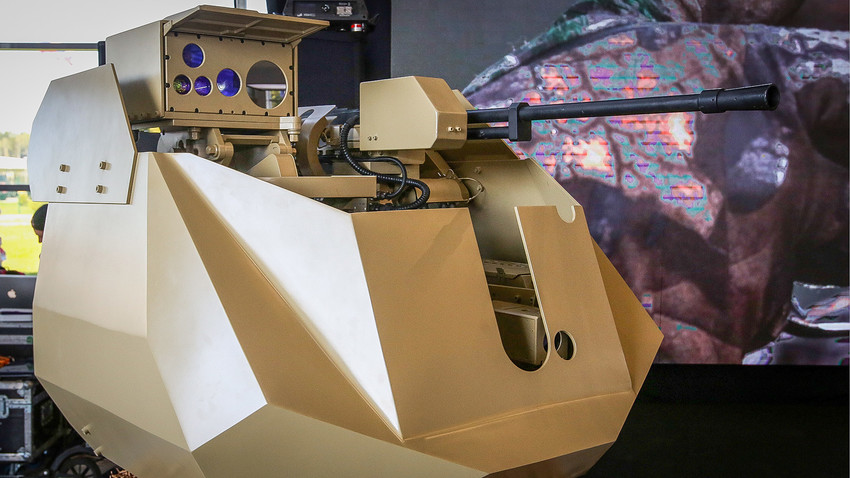Russian AI robots and acoustic military tech will soon be dominating the seas and battlefields

The Russian armed forces will soon be bolstered with artificial intelligence (AI)-controlled weapons systems, including a combat module resembling a
The first turret
At the same time, the operator can disable the AI functions and take manual control while the robot displays enemy targets on the monitor.
The robot can be used not only against ground targets, such as enemy infantry or lightly armored
The weapon can be installed as a single entity, and as part of several turrets linked into a single network for coordinated action. For example, to ensure perimeter security.
According to Kalashnikov Concern, the module is capable of taking independent decisions and differentiating animals from humans for example, so it knows when, where, and at what to shoot.
“The robot's AI has a database of targets pre-installed, which contains data on their appearance, movement, heat radiation, etc. There are constant updates, additions
The installation of these combat modules at military and state facilities will make it possible to eradicate human disadvantages, such as loss of vigilance or fatigue. The module is currently being tested by the manufacturer. If successful, it may become the first AI-controlled machine-gun tower for military units and important state facilities across Russia.
While the engineers are testing it, the Ministry of Defense is introducing underwater reconnaissance robots to protect its borders from intruders from the depths of the sea.
Underwater reconnaissance robot

The new system is called Harmony and consists of a network of robotic acoustic stations located on the seabed. Each robot can operate at temperatures from -10 to +45 °C.
The system conducts acoustic monitoring of the ocean using sonar. When an object is detected, its signal is transmitted via cable to a buoy floating on the surface, which in turn sends data to the control center via satellite.
If necessary, the station independently folds up and can be picked up by a passing submarine. Thanks to Harmony, the Russian Fleet will command almost complete control over hundreds of kilometers under water in all directions.
“They are planned to be deployed in locations where U.S., British, and French strategic submarines are stationed in the neutral waters of the world’s ocean,” Dmitry Safonov, a former military analyst for the Izvestia newspaper, told Russia Beyond. “The U.S. is deploying similar reconnaissance systems in the Norwegian and Barents seas and the Sea of Japan. They are closely watching our submarines, not only with the help of marine
According to Safonov, by the early
If using any of Russia Beyond's content, partly or in full, always provide an active hyperlink to the original material.
Subscribe
to our newsletter!
Get the week's best stories straight to your inbox